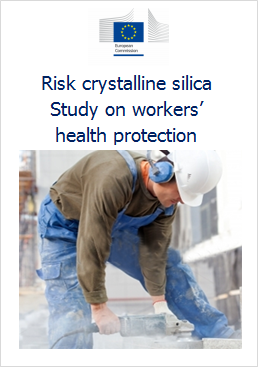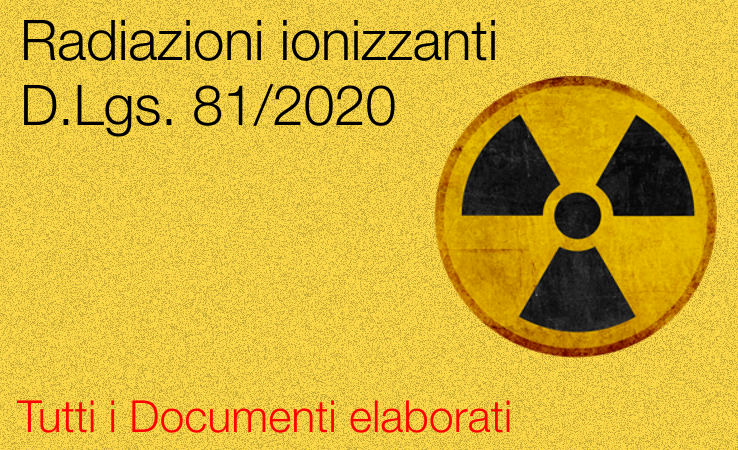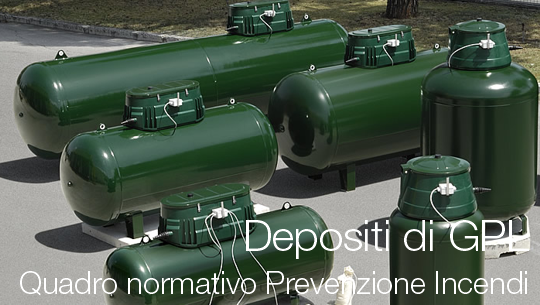Informazione tecnica HSE / 25 ° anno
/ Documenti disponibili:
45.558
/ Documenti scaricati: 34.441.473
/ Documenti scaricati: 34.441.473

Study on the implementation of the autonomous agreement on workers’ health protection through the good handling and use of crystalline silica and products containing it.
Crystalline silica is a material that is naturally abundant and raw materials and products containing crystalline silica are used in a wide variety of industries. Concerns have been raised about the health impact of exposure to respirable crystalline silica (RCS) which can be released during extraction or production processes. The European Commission’s Scientific Committee for Occupational Exposure Limits (SCOEL1 ) has argued that ‘the main effects in humans of the inhalation of RCS are silicosis.
There is sufficient information to conclude that the relative lung cancer risk is increased in persons with silicosis […].
Therefore, preventing the onset of silicosis will also reduce the cancer risk. Since a clear threshold for silicosis development cannot be identified, any reduction of exposure will reduce the risk of silicosis’. There are currently no occupational exposure limits (OEL) for RCS at EU level.
On 2 March 2004, the European Commission consulted the EU social partner (in line with Art.154 TFEU) regarding the opinion on a possible revision of Directive 90/394/EEC (the Carcinogens Directive) as regards, in particular, the OEL list. Following a six-month period of negotiation, on 25 April 2006, a multi-sectoral Agreement on Workers Health Protection through the Good Handling and Use of Crystalline Silica and Products containing it was signed, the first of its kind, which brought together social partners from 14 different sectors. Importantly, this does not include the construction sector, where the risk of exposure to RCS is greatest.
The objectives of the Agreement are:
- Protection of the health of employees and other individuals occupationally exposed at the workplace to respirable crystalline silica from materials / products / raw materials containing crystalline silica;
- Minimising exposure to respirable crystalline silica at the workplace by applying the Good Practices stipulated herein in order to prevent, eliminate or reduce occupational health risks related to respirable crystalline silica and;
- Increasing the knowledge about potential health effects of respirable crystalline silica and about relevant Good Practices. Study objectives The objective of this study was to provide the Commission with an assessment of the implementation of the Agreement. As stated in the Terms of Reference and announced in the Commission Communication on social dialogue2 , the Commission intends to undertake an independent monitoring of the Agreement aimed at assessing the contribution of this instrument towards achieving the Union’s objectives. The main purpose of this assignment therefore was to:
- Assess the implementation of the Agreement
- Assess the role of the signatories and their affiliated members as well as the actions undertaken by them, in the framework of the procedures and practices specific to management and labour, and of the Member States in the field of OSH
- Assess the impact of the Agreement on national regulations/legislations (if applicable)
- Collect background information and data on exposure levels at company, industry, sector and country level at the time the Agreement was signed and today
Analyse the reporting system put in place by the signatories and their national affiliated members and by national public authorities where possible
The study covered the EEA countries and aims to inform the assessment, follow-up and reporting of the implementation of the Agreement carried out by the Commission.
European Commission 2016
Decreto legislativo 14 settembre 2015, n.151. Articolo 21, commi 1, lettere b), c), d), e), f), 2 e 3. Modifiche agli articoli 53, 54, 56, 139, 238, 251 d.p.r. 1...

ID 11448 | 11.09.2020 (82 Documenti nella sezione alla data)
Raccolta in una unica sezione del sito, tutta la normativa ed i Documenti su...

ID 5985 | 05.11.2019
RTV Prevenzione Incendi depositi GPL: Testo commentato e coordinato VVF con le le modifiche apportate da:
- D.M. 14 M...
Testata editoriale iscritta al n. 22/2024 del registro periodici della cancelleria del Tribunale di Perugia in data 19.11.2024